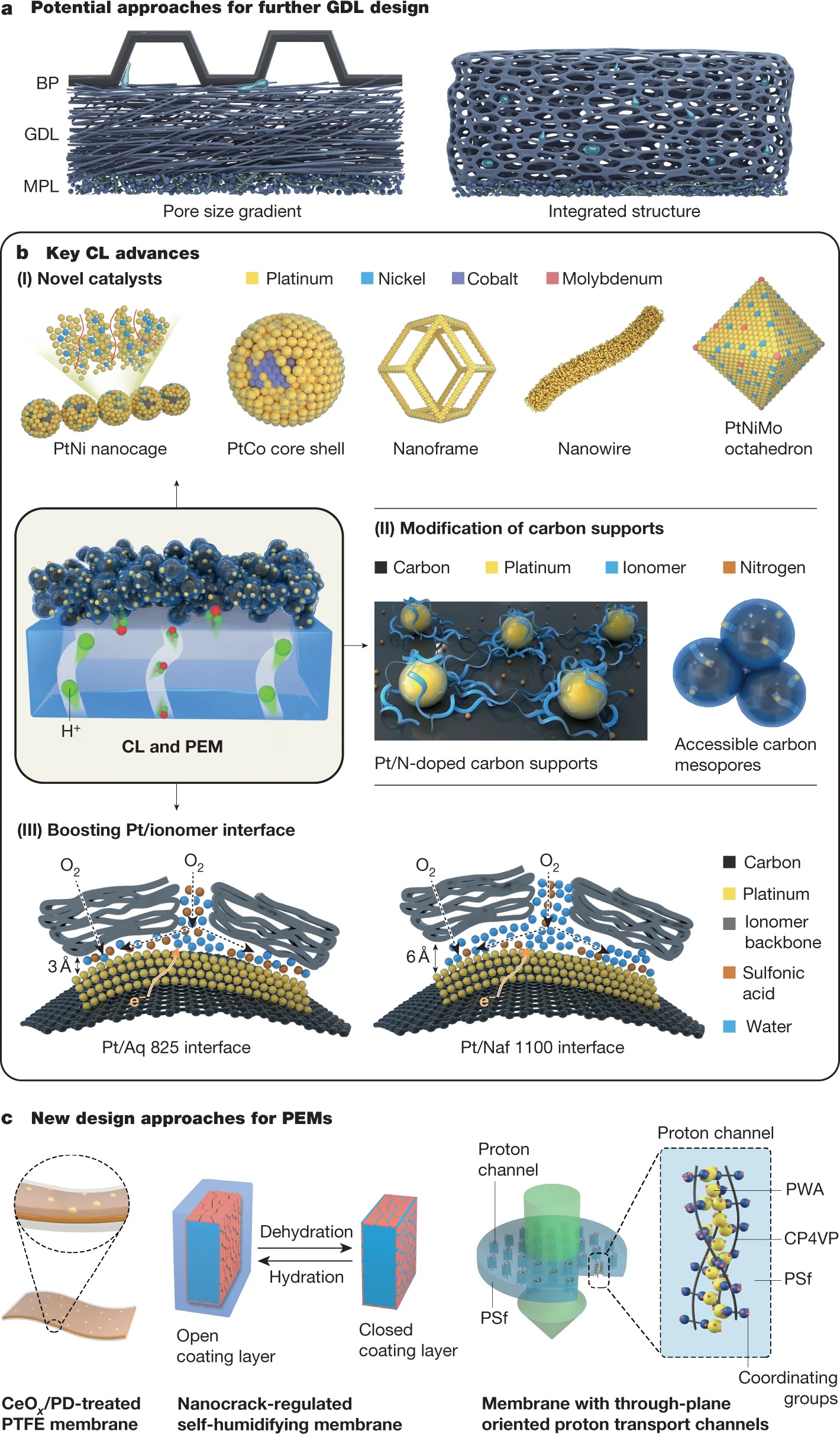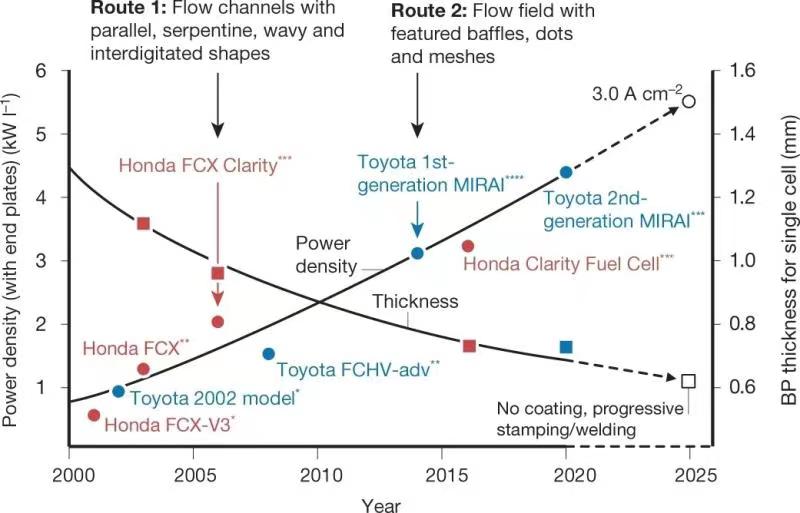Just imagine a low-carbon “electric” vehicle that can be fully “recharged” with hydrogen in five minutes instead of with electricity that calls for hours long to charge. This kind of fuel cell vehicle (FCV) will have a durance of 800 kilometers and only emit water. How can we develop proton exchange membrane fuel cells (PEMFCs) that are key to FCVs? What are the technical routes?
A research group led by Professor Jiao Kui from Tianjin University try to answer these questions in a perspective article published in Nature, the world’s leading multidisciplinary science journal on July, 14th. The 9-page long article proposes technical development directions required for next-generation ultra-high power density PEMFCs.

Fig. 1 State-of-the-art and next-generation MEA designs
“Many countries and regions have put forward clear development plans for fuel cells. In addition to the hydrogen related projects supported by our Chinese government, the United States, Japan and the European Union have proposed hydrogen energy routes, planning to increase the power density of fuel cell stack to 6-9 kW/L in the next decade or so while present fuel cell model can only reach 4.4 kW/L at most,” said Prof. Jiao Kui, “We addressed in the article the current challenges and developing potentials involving all the components of a PEMFC, and came up with specific technical indicators through simulation calculation. Hopefully, it will help achieve the significant boost in the PEMFC stack power density.”

Fig. 2 Trends in the development of BPs for FCVs
In view of the multi-scale electrochemical and thermophysical processes involved in fuel cells, the article referred to the latest achievements in the field of energy materials and analyzed the development routes of proton exchange membranes, catalyst layers, gas diffusion layers, micro-porous layers and bipolar plates of PEMFCs.
The research group also innovatively points out that the contribution of bipolar plate and membrane electrode assembly to the future power density improvement is about 30% and 70% respectively, but the components need to be optimized to achieve the goal.
With the rapid development of fuel cell technology in recent years, the fuel cell engine using hydrogen energy has become the most attractive clean energy power device in the field of transportation, and most likely to realize industrialization and commercialization. At present, major international automobile enterprises including Toyota and SAIC have launched mass production fuel cell vehicle models, and the whole industry is in a rapid rising stage.
The perspective article was completed under the joint efforts of Prof. Jiao Kui, Prof. Du Qing and Prof. Michael Guiver from Tianjin University, Prof. Xuan Jin from Loughborough University, the UK, Dr. Hou Zhongjun from Shanghai Hydrogen Propulsion Technology Co., Ltd., and other authors from Tianjin University, Imperial College London, the UK, and Shanghai Hydrogen Propulsion Technology Co., Ltd.
Link to the article:https://www.nature.com/articles/s41586-021-03482-7
By Eva Yin






